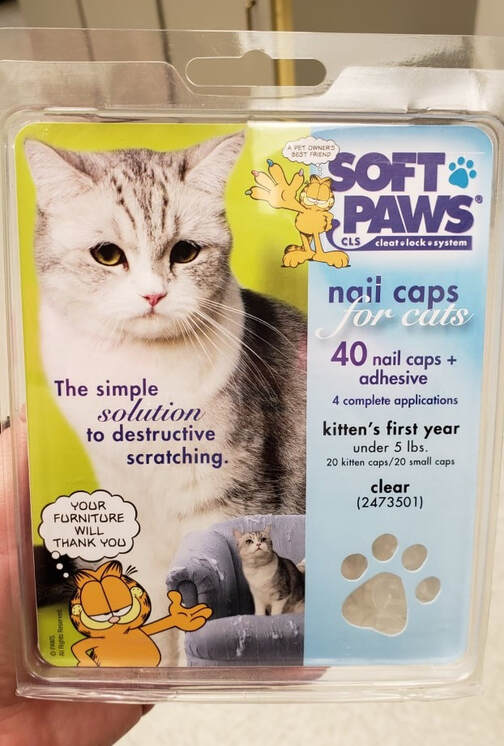Preventative home care can be a great benefit to the health of your pet. If you are interested in learning more, here are some helpful tips on common home care maintenance.
Trimming Your Pet's Nails
|
Trimming your pet's nails does not necessarily have to be a chore. Here are some key things to remember to make the process as stress-free as possible:
|
|
Securely Towel-Wrapping Your Pet
|
If you have a particularly wiggly pet, you may need to learn the burrito (also called "Purr-ito") technique in order to safely secure them for treatment.
|
|
Cleaning Your Pet's Ears
|
If your pet has had ear infections/issues before, or is a breed that may be predisposed to ear infections/issues, routinely cleaning their ears at home may prevent or slow these problems from happening in the future.
|
|
Applying Soft-Paws
|
Some cats have a tendency to scratch furniture or carpet despite having multiple scratching posts, trees, or cardboard scratching areas in your home to exercise this natural behaviour. Applying Soft Paws, which are vinyl nail caps that are glued on to your cat's claws, is an excellent way to save your household from scratch marks. Soft Paws come in many different sizes and colours, are relatively easy to apply, and will usually last 1-2 months.
|
Administering Oral Medication
|
Giving oral medication at home can often be as easy as hiding a pill in your pet's food or their favourite treat. However, some pets can present more of a challenge! If you have a picky eater and need to physically pill your pet, use these simple tips:
|
|
Giving a Subcutaneous Injection
|
Some pets need medication or fluids given subcutaneously (under the skin). Though this may seem overwhelming at first, a comfortable routine can easily be established by you and your pet. Subcutaneous medication/fluids can be given nearly anywhere that your pet has loose skin, but it is easiest to learn by using the scruff (the skin located over the shoulder blades). Always use a new syringe/needle to reduce the chance of infection and contamination.
|
|
Our Location10223 164 Ave NW,
Edmonton, AB T5X 3C9 (780) 456-3616 |
Hours of OperationMonday: 8:30 am - 6:00 pm
Tuesday: 8:30 am - 6:00 pm Wednesday: 8:30 am - 6:00 pm Thursday: 8:30 am - 6:00 pm Friday: 8:30 am - 6:00 pm Saturday: 9:00 am - 3:00 pm Sunday: Closed Please note that we are closed all statutory holidays and all Saturdays during long weekends.
|
VISIT US AT:
|
Site powered by Weebly. Managed by IDEXX Laboratories



